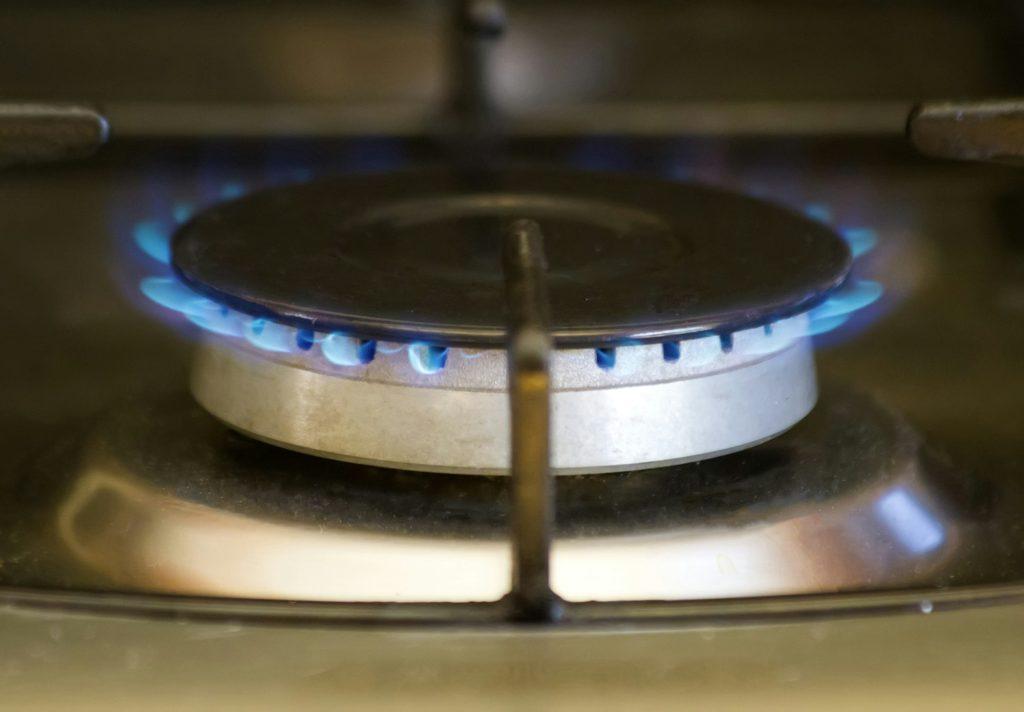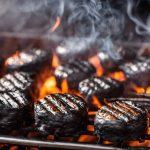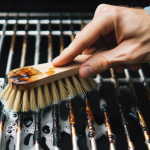Is that rotten egg smell near your grill making you lose your appetite? Are weak, sputtering flames ruining your BBQ plans? Don’t ignore these warning signs – they’re classic symptoms of a faulty propane regulator.
As a former chef at a busy NYC restaurant, I’ve seen firsthand how a failing regulator can bring your cooking to a screeching halt. That’s why I’ve created this guide to help you spot the signs of a bad propane regulator and show you what to do about it.
Through my years in professional kitchens, I’ve learned that detecting regulator issues early is key to preventing bigger problems down the line. A malfunctioning regulator can lead to:
- Dangerous gas leaks
- Underperforming appliances with weak flames
- Inconsistent cooking/grilling temperatures
- Even potential safety hazards if left unchecked
In this article, I’ll share my hard-earned insights on how to troubleshoot a faulty propane regulator like a pro. You’ll learn the telltale symptoms to watch for, simple DIY checks you can do, and when it’s time to call in a professional.
By the end, you’ll be armed with the knowledge to keep your gas appliances running smoothly and safely, whether you’re firing up the grill or relying on your trusty stove. Let’s dive in!
💁🏻♂️If you have an unstick propane tank value, please read this.
Faulty Gas Regulator Symptoms: What to Look Out For

As issues arise with your propane regulator, you may notice some red flags that signal it’s time to take action. Through trial and error in keeping the Boat Basin Café running, I learned to diagnose problems early.
Here are the most common symptoms of a faulty unit:
- 👃 Gas Leaks
- 🔥 Low Flames or Pilot Light Problems
- 👂 Unusual Noises
- 🐝 Insect Nest Clogs
I’ll elaborate on each of these below, plus tips for tackling the issue. But at the first sign of leaks or safety issues, your priority should be to shut off gas flow and call a professional immediately. Safety always comes first when dealing with gas appliances.
👃 Gas Leaks
The first sign is often detecting the pungent, rotten egg-like odor that alerts us to propane leaks. If you suspect any kind of leak:
- Evacuate immediately
- Call 911 – Fire dept should clear the area with gas detectors before re-entering
- Conduct leak checks only once certified safe
You can also check for less noticeable leaks using the soapy bubble test around joints and connections.
According to appliance repair company Leak Detect, “Even small bubbles mean there is a leak that needs to be repaired by a professional before continuing use.” Safety first!
💡Unique Insight: “Oddly, sometimes a bad leak makes the regulator ice up. Seems backward, but it’s all about pressure!”
Watch for any bubbling, as this indicates escaping gas even without an odor.
💁🏻♂️Caution: If you see lots of bubbles, shut off the gas tank valve immediately and evacuate until the leak can be repaired by a professional.
🔥 Low Flames or Pilot Light Problems

If your appliances like stoves, ovens, or water heaters seem to struggle with low power and inconsistent flames or pilot lights, the regulator could be interfering with steady gas flow.
My kitchen staff would panic anytime the massive oven pilot blew out mid-dinner rush! Likewise, an outdoor grill or fire pit that won’t stay lit can signal regulator trouble.
Inspect all connections before the unit itself.
💡Unique Insight: “Think of your water heater struggling to stay lit – low gas pressure can be just as frustrating as a busted pilot light.”
👂 Unusual Noises

Odd sounds coming from your gas appliances or regulator can also indicate problems. Listen for hissing, whistling, or rumbling noises that are louder or different than the usual gentle hum of gas flow.
This may signal obstructions within the regulator or leaks downstream.
📝I like to remember this tip from LP Gas magazine:
- A properly functioning regulator will create a soft hiss when gas is flowing
- Leaks make a high-pitched whistle.
Learn the difference to pick up on trouble signs. Harsh weather like high winds can also cause howling regulator vents.
🐝 Insect Nest Regulator Clogs
As you can see, regulators have little vents allowing pressure release. This opening can sometimes attract insects creating nests and clogs.
So if you hear odd sounds, it’s smart to check for any bug visitors! I’ve shooed away my share of persistent wasps at the cafe over the years.
Troubleshooting 101: Is Your Regulator the Problem?

If you’ve noticed any of the warning signs mentioned above, it’s time to do some troubleshooting to pinpoint the problem.
👉Follow these steps to diagnose your propane regulator issue:
Step 1: Perform a Visual Inspection
- Check for any visible damage, corrosion, or debris on the regulator body
- Ensure that the vent is clear and free of insect nests or other obstructions
- Look for any signs of wear and tear, such as cracks, dents, or loose connections
Step 2: Conduct a Bubble Leak Test
- Mix a solution of equal parts dish soap and water
- Apply the solution to the regulator and all connections using a spray bottle or brush
- Turn on the gas and watch for any bubbles forming, which indicate a leak
- If you spot a leak, turn off the gas immediately and call a professional
Step 3: Check the Regulator Pressure
- Attach a pressure gauge to the regulator outlet
- Turn on the gas and check the pressure reading
- The pressure should be within the recommended range for your specific regulator (usually 11-14 inches of water column pressure)
- If the pressure is too high or too low, the regulator may need to be adjusted or replaced
Step 4: Inspect Appliance Performance
- Check if the issue is isolated to one appliance or affects all appliances connected to the regulator
- Weak or inconsistent flames across all appliances suggest a regulator problem
- An issue with just one appliance may indicate a problem with that specific unit rather than the regulator
If your troubleshooting efforts don’t resolve the issue, or if you’re unsure about how to proceed, don’t hesitate to call a professional. Attempting to repair or adjust a propane regulator without proper training can be dangerous.
Remember, when it comes to gas appliances, safety should always be your top priority. If you have any doubts or concerns, err on the side of caution and seek expert assistance.
When to Call a Professional: Don’t Take Chances with Propane Safety

While I aim to empower homeowners to troubleshoot minor propane regulator issues on their own, it’s crucial to recognize when a problem is beyond your skill level.
Attempting to repair or adjust a regulator without proper training can put you and your property at risk.
👉Here are some clear signs that it’s time to call in a professional:
- You Smell Gas
- If you detect the distinctive rotten egg odor of propane gas, even after troubleshooting, don’t hesitate to call for help.
- A persistent gas smell indicates a potentially dangerous leak that requires immediate attention from a trained technician.
- The Regulator is Visibly Damaged
- If you notice any physical damage to the regulator, such as cracks, dents, or corrosion, it’s time to call in a pro.
- Attempting to repair a visibly damaged regulator can be dangerous and may void any warranties.
- You Can’t Resolve the Issue with Basic Troubleshooting
- If you’ve worked through the troubleshooting steps outlined above and the problem persists, it’s best to seek professional assistance.
- A certified technician will have the tools, knowledge, and experience to diagnose and resolve more complex regulator issues safely.
- You’re Unsure or Uncomfortable with DIY Repairs
- If you have any doubts about your ability to troubleshoot or repair the regulator safely, don’t take chances.
- It’s always better to err on the side of caution when dealing with propane gas and leave the repairs to a trained expert.
Remember, even seemingly minor propane regulator issues can quickly escalate into dangerous situations if not handled properly. As a homeowner, your top priority should be the safety of yourself, your family, and your property.
If you’re ever in doubt, don’t hesitate to reach out to a licensed propane technician for assistance. They can diagnose the problem, recommend the best course of action, and make any necessary repairs or replacements safely and efficiently.
It’s Not Just Hot and Cold: How Weather Impacts Regulators

As a professional chef, I know firsthand how much the changing seasons can impact the performance of propane appliances.
From the blistering heat of summer to the frigid cold of winter, extreme temperatures can take a toll on your regulator and cause a range of issues.
Here’s what you need to know to keep your propane system running smoothly year-round:
❄️ Cold Weather Issues
- Propane regulators are designed to maintain a steady pressure of 11-14 inches of water column, but extreme cold can cause problems.
- Freezing temperatures can cause regulators to malfunction, leading to low gas pressure and weak flames.
- Inspect your regulator for signs of frost or ice buildup, which can indicate a problem.
💡 Prevention Tip: In areas with harsh winters, consider installing a regulator cover to protect against snow and ice accumulation. Regularly check for and remove any buildup to ensure proper operation.
☀️ Summer Heat Hazards
- While propane regulators are designed to withstand high temperatures, excessive heat can still cause issues.
- High ambient temperatures can cause the regulator to expand, leading to over-pressurization and potential leaks.
- Keep your regulator shaded and well-ventilated to prevent overheating.
💡 Prevention Tip: Position your propane tank and regulator away from direct sunlight and sources of heat, such as grills or fire pits. Ensure proper ventilation to prevent heat buildup.
🍂 Seasonal Maintenance Checklist To keep your propane regulator in top shape throughout the year, follow this simple maintenance checklist:
- Spring: Inspect the regulator for any signs of damage or wear after the winter months. Check for leaks and ensure proper operation.
- Summer: Keep the regulator shaded and well-ventilated to prevent overheating. Check for leaks and monitor performance during peak usage.
- Fall: Prepare your regulator for the cooler months ahead. Inspect for any signs of damage and ensure proper operation before the first cold snap.
- Winter: Protect your regulator from snow and ice buildup. Check for signs of freezing and ensure proper pressure and operation.
Regulator Lifespans

The Boat Basin Café relied on gas cooking for decades without issue until appliances started acting up every winter.
I realized our trusty Marshall Excelsior regulator had lasted 20+ years but finally reached retirement age!
Age degradation is sneaky but real. Proactive replacement saves hassle down the road.
Conclusion
Troubleshooting a faulty propane regulator can seem daunting, but by following the steps outlined in this guide, you can diagnose and address many common issues on your own. Remember, the key to avoiding serious problems is catching them early and taking action promptly.
Here are the main takeaways from this guide:
- Know the signs of a failing regulator, such as gas odors, weak flames, or unusual noises.
- Perform regular visual inspections and leak tests to catch issues early.
- Follow the step-by-step troubleshooting process to diagnose problems safely.
- Don’t hesitate to call a professional if you’re unsure or uncomfortable with DIY repairs.
- Perform seasonal maintenance to keep your regulator in top shape year-round.
By staying vigilant and proactive, you can ensure that your propane system operates safely and efficiently, whether you’re firing up the grill for a summer cookout or relying on your stove to keep you warm in the winter.
FAQs
How often should I replace my propane regulator?
Most propane regulators are designed to last for 10-15 years with proper maintenance. However, if you notice any signs of wear, damage, or malfunction, it’s best to replace the regulator immediately.
Can I adjust my propane regulator myself?
While it is possible to adjust a propane regulator yourself, it’s generally not recommended unless you have the proper training and tools. Improper adjustments can lead to dangerous leaks or malfunctions. It’s best to leave regulator adjustments to a certified professional.
What should I do if I smell gas near my propane appliances?
If you smell gas, immediately turn off the gas supply at the tank and evacuate the area. Do not attempt to locate the leak yourself. Call your propane supplier or emergency services for assistance.
How can I prevent my propane regulator from freezing in cold weather?
To prevent freezing, keep your propane tank and regulator protected from snow and ice accumulation. Consider installing a regulator cover or insulating blanket to provide extra protection in harsh winter conditions.
Can I use my propane appliances if the regulator is malfunctioning?
No, it’s not safe to use propane appliances with a malfunctioning regulator. A faulty regulator can lead to gas leaks, improper pressure, and other hazards. If you suspect a problem with your regulator, discontinue use of your appliances until the issue is resolved by a professional.






